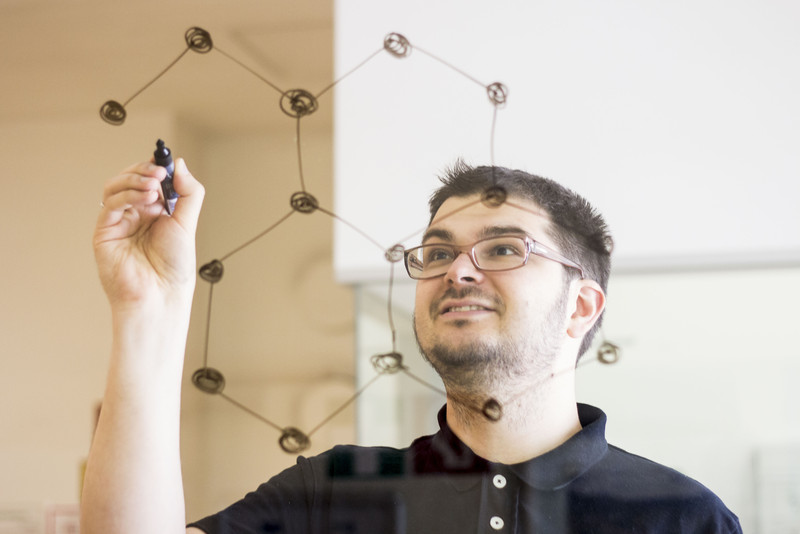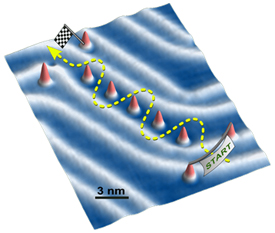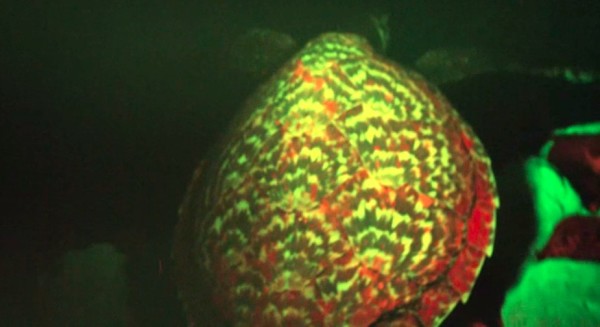I’ve grumbled more than once or twice about the seemingly secret society that is Canada’s nanotechnology effort (especially health, safety, and environment issues) and the fact that I get most my information from Organization for Economic Cooperation and Development (OECD) documents. That said, thank you to Lynne Bergeson’s April 8, 2016 post on Nanotechnology Now for directions to the latest OECD nano document,
The Organization for Economic Cooperation and Development recently posted a March 29, 2016, report entitled Developments in Delegations on the Safety of Manufactured Nanomaterials — Tour de Table. … The report compiles information, provided by Working Party on Manufactured Nanomaterials (WPMN) participating delegations, before and after the November 2015 WPMN meeting, on current developments on the safety of manufactured nanomaterials.
It’s an international roundup that includes: Australia, Austria, Belgium, Canada, Germany, Japan, Korea, the Netherlands, Switzerland, Turkey, United Kingdom, U.S., and the European Commission (EC), as well as the Business and Industry Advisory Committee to the OECD (BIAC) and International Council on Animal Protection in OECD Programs (ICAPO).
As usual, I’m focusing on Canada. From the DEVELOPMENTS IN DELEGATIONS ON THE SAFETY OF MANUFACTURED NANOMATERIALS – TOUR DE TABLE Series on the Safety of Manufactured Nanomaterials No. 67,
CANADA
National developments on human health and environmental safety including recommendations, definitions, or discussions related to adapting or applying existing regulatory systems or the drafting of new laws/ regulations/amendments/guidance materials A consultation document on a Proposed Approach to Address Nanoscale Forms of Substances on the Domestic Substances List was published with a public comment period ending on May 17, 2015. The proposed approach outlines the Government’s plan to address nanomaterials considered in commerce in Canada (on Canada’s public inventory). The proposal is a stepwise approach to acquire and evaluate information, followed by any necessary action. A follow-up stakeholder workshop is being planned to discuss next steps and possible approaches to prioritize future activities. The consultation document is available at: http://www.ec.gc.ca/lcpe-cepa/default.asp?lang=En&n=1D804F45-1
A mandatory information gathering survey was published on July 25, 2015. The purpose of the survey is to collect information to determine the commercialstatus of certain nanomaterials in Canada. The survey targets 206 substances considered to be potentially in commerce at the nanoscale. The list of 206 substances was developed using outcomes from the Canada-United States Regulatory Cooperation Council (RCC) Nanotechnology Initiative to identify nanomaterial types. These nanomaterial types were cross-referenced with the Domestic Substances List to develop a preliminary list of substances which are potentially intentionally manufactured at the nanoscale. The focus of the survey aligns with the Proposed Approach to Address Nanoscale Forms of Substances on the Domestic Substances List (see above) and certain types of nanomaterials were excluded during the development of the list of substances. The information being requested by the survey includes substance identification, volumes, and uses. This information will feed into the Government’s proposed approach to address nanomaterials on the Domestic Substances List. Available at: http://gazette.gc.ca/rp-pr/p1/2015/2015-07-25/html/notice-avis-eng.php
Information on:
a.risk assessment decisions, including the type of: (a) nanomaterials assessed; (b) testing recommended; and (c) outcomes of the assessment;
Four substances were notified to the program since the WPMN14 – three surface modified substances and one inorganic substance. No actions, including additional data requests, were taken due to low expected exposures in accordance with the New Substances Notifications Regulations (Chemicals and Polymers) (NSNR) for two of the substances. Two of the substances notified were subject to a Significant New Activity Notice. A Significant New Activity notice is an information gathering tool used to require submission of additional information if it is suspected that a significant new activity may result in the substance becoming toxic under the Canadian Environmental Protection Act, 1999.
b.Proposals, or modifications to previous regulatory decisions
As part of the Government’s Chemicals Management Plan, a review is being undertaken for all substances which have been controlled through Significant New Activity (SNAc) notices (see above). As part of this activity, the Government is reviewing past nanomaterials SNAc notices to see if new information is available to refine the scope and information requirements. As a result of this review, 9 SNAc notices previously in place for nanomaterials have been rescinded. This work is ongoing, and a complete review of all nanomaterial SNAcs is currently planned to be completed in 2016.
Information related to good practice documents
The Canada-led, ISO standards project, ISO/DTR 19716 Nanotechnologies — Characterization of cellulose nanocrystals, [emphasis mine] initiated in April 2014, is now at Committee Draft (CD) 3-month ISO ballot, closing Aug 31, 2015. Ballot comments will be addressed during JWG2 Measurement and Characterization working group meetings at the 18th Plenary of ISO/TC229, Nanotechnologies, being held in Edmonton, Alberta, Sep. 28 – Oct. 2, 2015.
Research programmes or strategies designed to address human health and/ or environmental safety aspects of nanomaterials
Scientific research
Environment Canada continues to support various academic and departmental research projects. This research has to date included studying fate and effects of nanomaterials in the aquatic, sediment, soil, and air compartments. Funding in fiscal 2015-16 continues to support such projects, including sub-surface transportation, determining key physical-chemical parameters to predict ecotoxicity, and impacts of nano-silver [silver nanoparticles] addition to a whole lake ecosystem [Experimental Lakes Area?]. Environment Canada has also partnered with the National Research Council of Canada recently to initiate a project on the development of test methods to identify surfaces of nanomaterials for the purposes of regulatory identification and to support risk assessments. In addition, Environment Canada is working with academic laboratories in Canada and Germany to prepare guidance to support testing of nanoparticles using the OECD Test Guideline for soil column leaching.
Health Canada continues its research efforts to investigate the effects of surface-modified silica nanoparticles. The aims of these projects are to: (1) study the importance of size and surface functionalization; and (2) provide a genotoxic profile and to identify mechanistic relationships of particle properties to elicited toxic responses. A manuscript reporting the in vitro genotoxic, cytotoxic and transcriptomic responses following exposure to silica nanoparticles has recently been submitted to a peer reviewed journal and is currently undergoing review. Additional manuscripts reporting the toxicity results obtained to date are in preparation.
Information on public/stakeholder consultations;
A consultation document on a Proposed Approach to Address Nanoscale Forms of Substances on the Domestic Substances List was published with a public comment period ending on May 17, 2015 (see Question 1). Comments were received from approximately 20 stakeholders representing industry and industry associations, as well as non-governmental organizations. These comments will inform decision making to address nanomaterials in commerce in Canada.
Information on research or strategies on life cycle aspects of nanomaterials
Canada, along with Government agencies in the United States, Non-Governmental Organizations and Industry, is engaged in a project to look at releases of nanomaterials from industrial consumer matrices (e.g., coatings). The objectives of the NanoRelease Consumer Products project are to develop protocols or
methods (validated through interlaboratory testing) to measure releases of nanomaterials from solid matrices as a result of expected uses along the material life cycle for consumer products that contain the nanomaterials. The project is currently in the advanced stages of Phase 3 (Interlaboratory Studies). The objectives of Phase 3 of the project are to develop robust methods for producing and collecting samples of CNT-epoxy and CNT-rubber materials under abrasion and weathering scenarios, and to detect and quantify, to the extent possible, CNT release fractions. Selected laboratories in the US, Canada, Korea and the European Community are finalising the generation and analysis of sanding and weathering samples and the results are being collected in a data hub for further interpretation and analysis.
Additional details about the project can be found at the project website: http://www.ilsi.org/ResearchFoundation/RSIA/Pages/NanoRelease1.aspx
Under the OECD Working Party on Resource Productivity and Waste (WPRPW), the expert group on waste containing nanomaterials has developed four reflection papers on the fate of nanomaterials in waste treatment operations. Canada prepared the paper on the fate of nanomaterials in landfills; Switzerland on the recycling of waste containing nanomaterials; Germany on the incineration of waste containing nanomaterials; and France on nanomaterials in wastewater treatment. The purpose of these papers is to provide an overview of the existing knowledge on the behaviour of nanomaterials during disposal operations and identify the information gaps. At the fourth meeting of the WPRPW that took place on 12-14 November 2013, three of the four reflection papers were considered by members. Canada’s paper was presented and discussed at the fifth meeting of the WPRPRW that took place on 8-10 December 2014. The four papers were declassified by EPOC in June 2015, and an introductory chapter was prepared to draw these papers together. The introductory chapter and accompanying papers will be published in Fall 2015. At the sixth meeting of the WPRPW in June – July 2015, the Secretariat presented a proposal for an information-sharing platform that would allow delegates to share research and documents related to nanomaterials. During a trial phase, delegates will be asked to use the platform and provide feedback on its use at the next meeting of the WPRPW in December 2015. This information-sharing platform will also be accessible to delegates of the WPMN.
Information related to exposure measurement and exposure mitigation.
Canada and the Netherlands are co-leading a project on metal impurities in carbon nanotubes. A final version of the report is expected to be ready for WPMN16. All research has been completed (e.g. all components are published or in press and there was a presentation by Pat Rasmussen to SG-08 at the Face-to-Face Meeting in Seoul June 2015). The first draft will be submitted to the SG-08 secretariat in autumn 2015. Revisions will be based on early feedback from SG-08 participants. The next steps depend on this feedback and amount of revision required.
Information on past, current or future activities on nanotechnologies that are being done in co-operation with non-OECD countries.
A webinar between ECHA [European Chemicals Agency], the US EPA [Environmental Protection Agency] and Canada was hosted by Canada on April 16, 2015. These are regularly scheduled trilateral discussions to keep each other informed of activities in respective jurisdictions.
In March 2015, Health Canada hosted 3 nanotechnology knowledge transfer sessions targeting Canadian government research and regulatory communities working in nanotechnology. These sessions were an opportunity to share information and perspectives on the current state of science supporting the regulatory oversight of nanomaterials with Government. Presenters provided detailed outputs from the OECD WPMN including: updates on OECD test methods and guidance documents; overviews of physical-chemical properties, as well as their relevance to toxicological testing and risk assessment; ecotoxicity and fate test methods; human health risk assessment and alternative testing strategies; and exposure measurement and mitigation. Guest speakers included Dr Richard C. Pleus Managing Director and Director of Intertox, Inc and Dr. Vladimir Murashov Special Assistant on Nanotechnology to the Director of National Institute for Occupational Safety and Health (NIOSH).
On March 4-5, 2015, Industry Canada and NanoCanada co-sponsored “Commercializing Nanotechnology in Canada”, a national workshop that brought together representatives from industry, academia and government to better align Canada’s efforts in nanotechnology. This workshop was the first of its kind in Canada. It also marked the official launch of NanoCanada (http://nanocanada.com/), a national initiative that is bringing together stakeholders from across Canada to bridge the innovation gap and stimulates emerging technology solutions.
It’s nice to get an update about what’s going on. Despite the fact this report was published in 2016 the future tense is used in many of the verbs depicting actions long since accomplished. Maybe this was a cut-and-paste job?
Moving on, I note the mention of the Canada-led, ISO standards project, ISO/DTR 19716 Nanotechnologies — Characterization of cellulose nanocrystals (CNC). For those not familiar with CNC, the Canadian government has invested hugely in this material derived mainly from trees, in Canada. Other countries and jurisdictions have researched nanocellulose derived from carrots, bananas, pineapples, etc.
Finally, it was interesting to find out about the existence of NanoCanada. In looking up the Contact Us page, I noticed Marie D’Iorio’s name. D’Iorio, as far as I’m aware, is still the Executive Director for Canada’s National Institute of Nanotechnology (NINT) or here (one of the National Research Council of Canada’s institutes). I have tried many times to interview someone from the NINT (Nils Petersen, the first NINT ED and Martha Piper, a member of the advisory board) and more recently D’Iorio herself only to be be met with a resounding silence. However, there’s a new government in place, so I will try again to find out more about the NINT, and, this time, NanoCanada.


